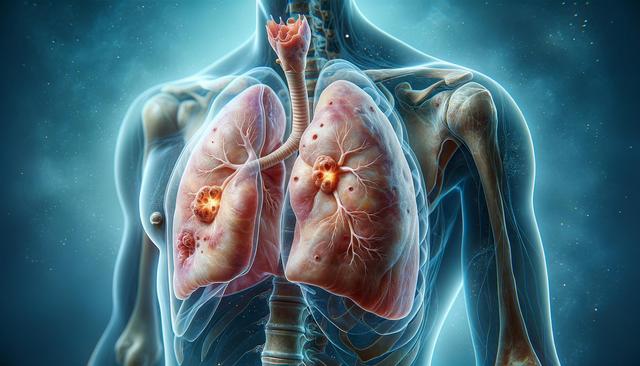Understanding the Importance of Early Detection
Lung cancer often develops silently, with minimal symptoms in its early stages. This can make it challenging to detect until it has progressed to a more advanced phase. However, recognizing early signs can play a vital role in improving the potential for effective intervention. While no symptom alone confirms lung cancer, consistent or unusual changes in your health should prompt a medical evaluation. The earlier lung cancer is identified, the more options there are for treatment, potentially reducing the severity of outcomes. Awareness and vigilance are essential, especially for individuals with known risk factors such as smoking history or prolonged exposure to pollutants.
One common misconception is that lung cancer only affects smokers. While smoking is a leading cause, non-smokers can also develop the disease due to genetic factors, environmental exposures, or previous medical conditions. This broadens the importance of being attentive to early warning signs across all demographics. Regular check-ups and open discussions with healthcare providers can establish a baseline for your health, making it easier to detect changes early.
Persistent Cough and Changes in Breathing
A persistent cough is one of the most frequently reported early signs of lung cancer. Unlike a temporary cough due to a cold or respiratory infection, this type of cough does not resolve over time and may gradually worsen. It can be dry or produce mucus, sometimes with traces of blood. People often dismiss it as a lingering cold or smoker’s cough, which delays necessary evaluation.
Changes in breathing patterns are another critical indicator. New onset of shortness of breath, wheezing, or labored breathing—especially during routine activities—can signal a problem. These symptoms may be caused by the tumor blocking airways or fluid build-up in the lungs. If you notice that everyday tasks leave you more winded than usual, it’s worth discussing with a healthcare professional.
Key respiratory symptoms to monitor include:
- Cough that persists for more than three weeks
- Shortness of breath with minimal exertion
- Wheezing not associated with asthma
- Hoarseness or voice changes
Chest Pain and Discomfort
Chest pain associated with lung cancer may not be constant, but it tends to intensify with deep breathing, coughing, or laughing. Unlike cardiac-related pain, which is often described as pressure, this discomfort may feel sharp and localized. It can also radiate to the shoulders, back, or arms, depending on the tumor’s location.
Because chest pain can stem from various causes, including musculoskeletal issues or infections, it’s easy to overlook. However, any new or unexplained chest discomfort should be evaluated, especially when accompanied by other symptoms like a persistent cough or shortness of breath. Lung cancer-related chest pain typically results from tumor growth pressing against nearby tissues, nerves, or bones.
Additional signs that may accompany chest discomfort include:
- Unexplained fatigue or weakness
- Reduced stamina during physical activity
- Localized tenderness in the chest or back
Systemic Symptoms Beyond the Lungs
Lung cancer doesn’t only affect the respiratory system; it can trigger broader symptoms throughout the body. One of the more common systemic signs is unexplained weight loss. This occurs as cancer cells consume the body’s energy and may also result from changes in appetite. If you are losing weight without trying, especially in combination with other symptoms, it warrants medical attention.
Fatigue is another common yet non-specific symptom. It tends to be more severe than typical tiredness and doesn’t improve with rest. This kind of fatigue can affect daily function and quality of life. In some cases, lung cancer can lead to recurring infections such as bronchitis or pneumonia due to weakened lung function.
Other systemic indicators to be aware of include:
- Loss of appetite or difficulty eating
- Persistent body aches or joint pain
- Swelling in the face or neck due to blocked blood flow
When to Seek Medical Advice
Knowing when to consult a healthcare provider is crucial. Many early signs of lung cancer overlap with less serious conditions, which can lead to delays in diagnosis. It’s important to consider the duration and combination of symptoms. If you experience multiple signs concurrently, or if any symptom persists for more than a few weeks, seeking medical advice is a necessary step.
For individuals with a history of smoking, exposure to secondhand smoke, or occupational hazards such as asbestos, vigilance is particularly important. Early diagnostic tools, including chest X-rays and CT scans, can detect abnormalities before symptoms become severe. Even without a high-risk background, being proactive about your health can lead to earlier identification and more treatment options.
Situations that warrant a medical consultation include:
- Cough lasting more than three weeks
- Repeated respiratory infections
- New or worsening chest pain
- Unexplained weight loss or fatigue
Conclusion: Prioritizing Awareness and Early Action
Recognizing the early signs of lung cancer is a critical step toward improving outcomes. While symptoms can be subtle or mistaken for less severe conditions, paying attention to ongoing changes in your health can make a significant difference. Early detection not only increases the range of available treatment options but also enhances the potential for a more favorable prognosis.
Understanding your risk factors, staying informed about warning signs, and maintaining regular communication with healthcare providers are all part of a proactive approach to lung health. Whether or not you fall into a high-risk category, awareness and timely action remain your strongest resources in addressing potential concerns related to lung cancer.


